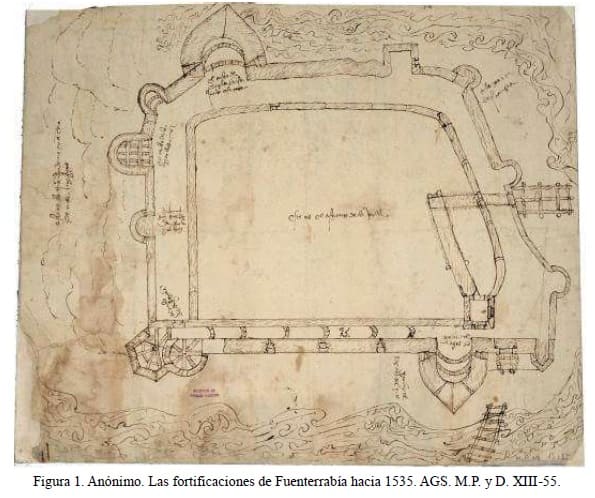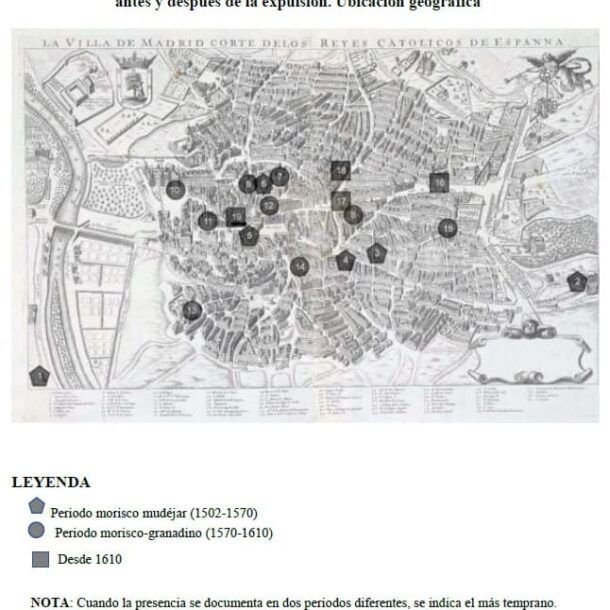
During the second half of the 16th century, the fortification of Fuenterrabía was redesigned by the military engineer Jacobo Palear Fratín, designing a pentagonal citadel in the same style as the one built in Pamplona, enveloping the existing medieval defensive belt with a modern one to allow for a larger scale and artillery capacity. The medieval wall was preserved mainly due to the conditioning factors of the terrain, as it could not be directly adapted to the new needs.
The original elevation of the fortress made it impossible to establish surfaces suitable for the armament needs of the time. Successive bastions were built around the medieval wall, until the middle of the 17th century when Fuenterrabía was besieged by French troops and work was rushed, leaving the enclosure with the characteristics that can be seen in the representative image from 1638.
Collection: Images
Project: 3. Rural world and urban world in the formation of the European identity., 6. Under a cloak of terror: violence and armed conflict in Europe.
Chronology: XVII
Scope: Secondary Education, Baccalaureate, University
Link: http://www.tiemposmodernos.org/tm3/index.php/tm/article/view/1673
Resource type: Image
Format: Drawing
Source: Echarri, V. (2017). "El proyecto de Jorge Próspero Verboom para las fortificaciones de Fuenterrabía en 1725", en Tiempos modernos, nº 34, p. 208.
Language: Spanish
Date: 1638
Owner: Roberto José Alcalde López (Modernalia)
Copyright: ©Tiempos Modernos ©Víctor Echarri Iribarren
Abstract: Image showing the walled enclosure of the city of Fuenterrabía, during the French siege of 1638
Image
Tags







